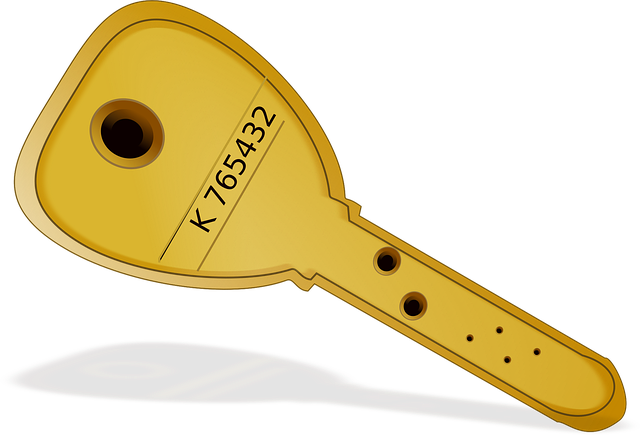Key card door locks, utilizing RFID technology, have become a popular choice for modern access control systems due to their speed, efficiency, and enhanced security. They allow authorized users to gain instant entry by simply tapping or holding their RFID card near a reader. Over traditional magnetic stripe cards, RFID offers unique identification capabilities that prevent counterfeiting. Implementing RFID key card technology requires strategic planning, including assessment, selection of suitable hardware, integration with existing systems, testing, and addressing security concerns through robust encryption. Future developments will see these locks integrate with smart buildings and IoT ecosystems, providing multi-factor authentication, biometric data, real-time access logging, and personalized entry across diverse environments.
“Experience the future of entry with RFID key card technology, transforming the way we secure our spaces. This article explores the innovative potential of Radio-Frequency Identification (RFID) in access control systems, highlighting its advantages over traditional methods. From understanding the basics of key card door locks to delving into implementation and security considerations, we provide a comprehensive guide. Discover how RFID enhances efficiency, convenience, and security, shaping the future of key card door locks.”
Understanding Key Card Door Locks: The Basics
Key card door locks have become a ubiquitous solution for secure access control in various settings, from offices and apartment buildings to hotels and airports. These smart locks utilize RFID (Radio-Frequency Identification) technology, enabling seamless entry for authorized users while maintaining robust security measures. At their core, key card door locks consist of three primary components: the RFID card or fob, the lock itself, and a reading device.
When an individual approaches the door equipped with such a lock, they simply tap or hold their RFID card near the reader. The reader detects the unique radio frequency signal emitted by the card, verifies its authenticity against a pre-programmed database, and subsequently disengages the lock mechanism, granting instant access. This technology offers unparalleled convenience while ensuring only those with valid credentials can enter secured areas, making it a preferred choice for modern access control systems.
Advantages of RFID Technology in Access Control
RFID technology offers numerous advantages over traditional access control methods, particularly in the context of key card door locks. One of its key benefits is speed and efficiency. RFID cards can be read quickly, often within a few centimetres, allowing for seamless entry or exit. This real-time data transfer streamlines processes, reducing wait times at doors, especially in high-traffic areas like offices, hotels, or public transport hubs.
Furthermore, RFID technology enhances security with its unique identification capabilities. Unlike magnetic stripes that can be easily replicated or skimmed, RFID tags contain microchips that store complex data, making counterfeiting much more difficult. This advanced security feature ensures only authorised personnel gain access, providing an additional layer of protection for sensitive areas within a building.
Implementation and Integration: A Step-by-Step Guide
Implementing RFID key card technology for seamless entry involves a strategic, step-by-step approach to ensure smooth transition and optimal performance. Begin by assessing your existing access control system and identifying areas where RFID key cards can offer improved security and convenience. Next, choose the appropriate RFID chip and reader technology based on your facility’s size, traffic patterns, and specific access requirements. Integrate the new RFID readers with your existing door locks or access control panels through a compatible interface or gateway device. This step ensures seamless communication between the card readers and your overall system. Following integration, test the system rigorously to verify reader range, card recognition accuracy, and authorization protocols. Address any issues before deploying the solution across your facility, ensuring secure and hassle-free entry for authorized personnel using key card door locks.
Security Considerations and Future Trends in RFID Key Card Systems
RFID key card systems offer unparalleled convenience for access control, but security remains a paramount concern. The unique identifiers on each card must be robustly protected to prevent unauthorized access or data manipulation. Encryption and secure communication protocols are essential components of modern RFID key card technology, ensuring that even if a card is compromised, the potential for malicious use is significantly minimized.
Looking ahead, the future of RFID key card systems promises enhanced integration with smart buildings and IoT (Internet of Things) ecosystems. Expect to see more cards offering multi-factor authentication, biometric data integration, and real-time access logging. These advancements not only strengthen security but also elevate the user experience by enabling seamless, personalized entry for authorized individuals across diverse environments, from smart homes to secure office complexes and industrial facilities, ultimately streamlining operations through key card door locks.
RFID key card technology offers a seamless, secure solution for access control. By understanding the basics of key card door locks and leveraging the advantages of RFID, organizations can streamline entry processes and enhance security. Implementation involves a structured step-by-step guide, ensuring efficient integration. As we look to the future, continuous innovation in RFID key card systems addresses evolving security needs, solidifying its position as a game-changer in access management.
